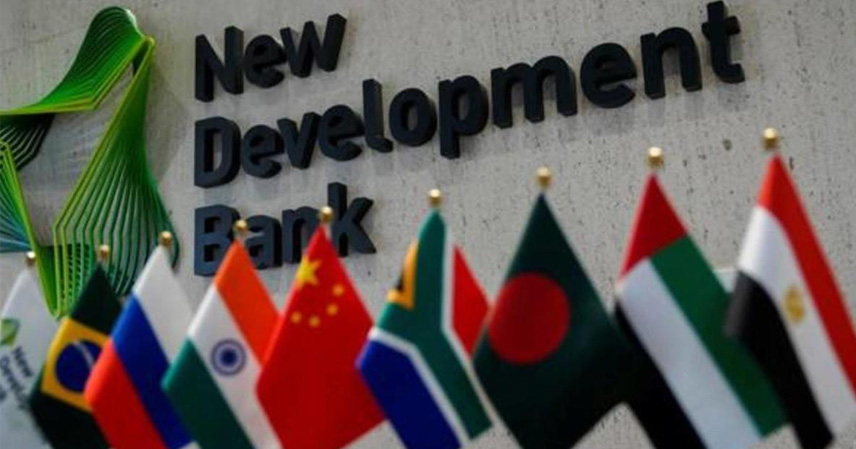The BRICS bloc—originally founded to amplify the voice of developing nations—now seems to face an unexpected dilemma. As the group expands, its unity appears to waver.
On the surface, BRICS is growing stronger and larger, yet beneath the momentum, internal divisions are quietly deepening.
Recent developments have exposed subtle but telling fractures: India has once again taken a contrarian stance, Russia seems to be softening its tone toward the U.S. dollar, while China has chosen a quieter path—steadily increasing its gold reserves.
At first glance, these moves seem unrelated. But together, they reveal fundamentally different interpretations of the global order—and distinct strategies for the future.
India’s Calculated Ambiguity: Playing Both Sides
Among BRICS members, India is the first to break the balance. When discussions arise about reducing dollar dependence, introducing a common currency, or establishing a shared payment system, India remains noticeably indifferent.
While other countries debate passionately, India prefers to “wait and see.” Historically, New Delhi has resisted any initiative that demands too much integration or uniformity—it values flexibility above all.
This stance isn’t hard to understand. India’s foreign policy is rooted in strategic ambiguity:
- On one hand, it shares close ties with China and Russia through BRICS and the Shanghai Cooperation Organization.
- On the other, it actively participates in U.S.-led Indo-Pacific alliances with Japan and Australia.
Caught between these camps, India is reluctant to make commitments that might jeopardize its diplomatic balance.
The BRICS expansion complicates this further. New members like Saudi Arabia and the UAE maintain friendly relations with the United States. Expecting instant consensus among such diverse players is unrealistic.
For India, “caution” is a strategy—it’s waiting to see which direction BRICS takes before choosing its own seat on the train.
But herein lies the problem: BRICS was never designed as a highly unified organization. It’s more of a consultative platform. If key members avoid commitment, discussions risk stagnating. India’s hesitation, while pragmatic, makes internal coordination increasingly difficult.
Russia’s Softening Rhetoric: From Defiance to Caution
If India’s restraint worries observers, Putin’s recent remarks have raised eyebrows.
For years, Russia was the most vocal advocate of “de-dollarization.” It pushed for trade in local currencies and championed the creation of a BRICS payment system to bypass Western financial networks.
Yet recently, Putin remarked that “we are not against the dollar.”
This was a stunning shift. Just months ago, Moscow was urging deeper yuan-ruble settlements; now, it seems to be easing its tone. Why?
Several factors explain the change.
First, the global landscape is shifting rapidly—and with the U.S. presidential election approaching, a potential Trump return offers Moscow a new diplomatic opening. Putin likely wants to keep channels open rather than close doors prematurely.
Second, full de-dollarization is far more complex than slogans suggest. The majority of global commodity trade—especially energy—remains dollar-dominated.
For a heavily sanctioned economy like Russia’s, economic pragmatism outweighs ideology. A softer tone provides strategic flexibility and reduces additional pressure.
Putin’s recalibration is a reminder: national policy is ultimately driven by immediate interests, not abstract ideals. For BRICS, it signals that no single member can carry the de-dollarization agenda alone. Ambition must yield to reality.
China’s “Golden Path”: Quiet Strength in Stability
In contrast, China’s approach has been understated yet decisive.
Rather than issuing bold declarations or leading public campaigns, China has steadily increased its gold reserves—a move both cautious and strategic.
Gold remains the most politically neutral store of value, immune to sanctions and external control. By expanding its gold holdings, China is effectively fortifying its financial defenses.
Over the past year, China’s central bank has consistently purchased gold, often quietly, with little public fanfare. This is not a temporary tactic—it’s part of a long-term strategy.
In an era of global uncertainty, even the dollar’s dominance looks less secure. America’s growing fiscal deficits and political instability have turned the dollar from a “safe haven” into a volatile asset.
China’s response is not confrontation, but preparation. Gold provides stability beyond the reach of geopolitics.
Moreover, increasing gold reserves strengthens the credibility of the yuan. As China promotes yuan-based settlements and cross-border trade, a solid gold foundation enhances international confidence.
China’s quiet persistence contrasts sharply with the erratic behavior of others. It reflects strategic patience—a belief in gradual progress rather than headline victories.
The BRICS Crossroads: Divergence or Renewal?
Today’s BRICS is far more complex than its original five-member framework. Expansion has diversified its voices—and its interests. Economic structures, foreign policy goals, and strategic priorities differ widely across the bloc.
India’s caution, Russia’s recalibration, and China’s consistency represent three distinct survival strategies in a turbulent world:
- Adaptability,
- Flexibility, and
- Resilience.
This diversity makes BRICS more representative, but also harder to steer.
Still, internal friction does not necessarily spell decline. In a rapidly changing global order, BRICS remains the most visible coalition of the Global South, united by a shared desire for a more balanced world system.
Disagreement, paradoxically, is a sign of realism. A coalition without debate is an illusion.
Real cooperation is not about uniformity—it’s about finding balance within difference. The path ahead for BRICS may be uneven, but as long as its direction remains clear, the journey continues to hold promise.
In the end, success will not belong to those who shout the loudest, but to those who move steadily, think strategically, and endure the test of time.
References
- Official BRICS communiqués and summit statements (2023–2024)
- Central Bank of Russia, statements on currency policy (2024)
- People’s Bank of China, gold reserve reports (2023–2024)
- Indian Ministry of External Affairs, remarks on BRICS financial cooperation (2024)



